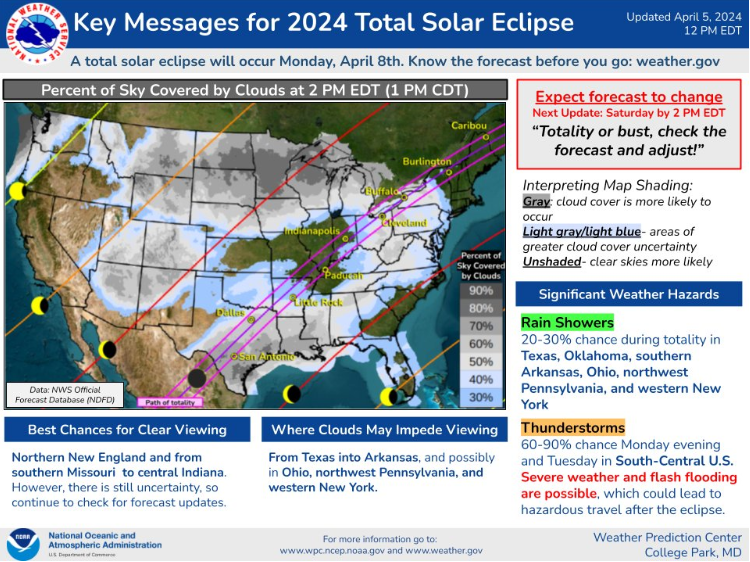Cloud coverage will 'most likely' impede eclipse viewing in Texas, NWS reports
With three days to go until the eclipse, cloud coverage and even some rain could be in the forecast for Texas, potentially hindering the event's full effect on Monday afternoon.
What is the forecast for Texas during the solar eclipse?
The large majority of Texas will experience overcast ranging from 30-90%, according to the National Weather Service as of Thursday. The further south, the more cloud coverage, with 90% of San Antonio's skies covered by clouds.
The moon will begin covering the sun around noon and will be fully covered by 1:30 p.m. near Del Rio and trace a line northeast across Texas. Cloud coverage is "most likely" to impede the path of totality in Texas, according to the National Weather Service.

Weather following the eclipse could hinder travel
There is a 20-30% chance of showers during the eclipse across Texas, according to the National Weather Service. Severe weather and flash flooding is possible in the southern part of the country, including Texas. National Weather Service warned of potentially hazardous travel after the eclipse due to a 60-90% chance of thunderstorms in the evening.
However, the agency has noted that the event is several days out, so there's still time for the weather to change. Plus, it's possible that clouds could vanish as the solar eclipse makes its way over the state.
More: Why science says clouds could disappear as solar eclipse begins to pass over Texas
While a similar event happened seven years ago, this rare phenomenon will be a couple of thousand miles closer to Earth than previous occurrences. It will be partially visible in all 48 contiguous states and marks the last total solar eclipse until August 23, 2044, according to NASA.
This article originally appeared on Des Moines Register: Clouds 'most likely' to impede Texas solar eclipse, NWS says

